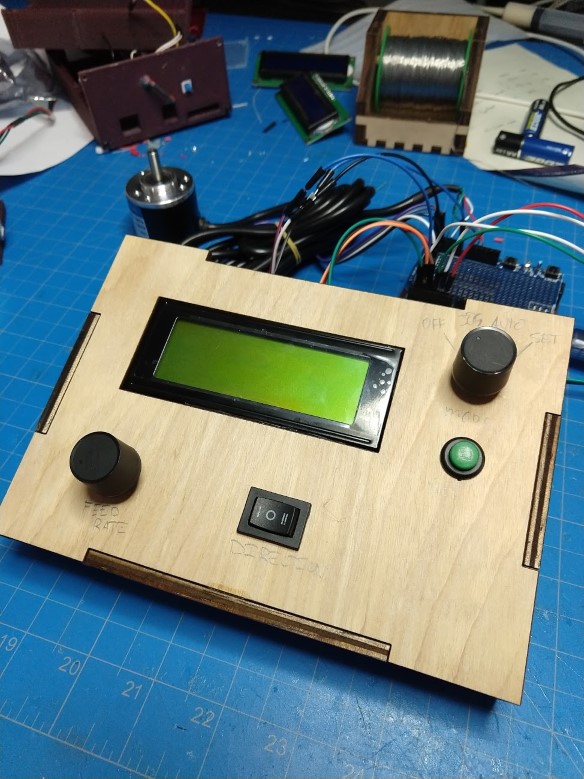This idea has been floating around in my brain for awhile. I am finally getting started on it, and hopefully writing it down here will help me remember to finish it.
The “problem”
The mini lathe uses change gears for the leadscrew; for anything other than threading they are a pain in the butt (in my opinion). Changing the feed rate is annoying, and for regular turning I think it would be great if it were variable, just like a power feed on a milling machine.
This isn’t a novel idea, but I won’t let that stop me. Here are some others who have done this already:
- http://www.mini-lathe.com/Mini_mill/Modifications/Power_feed/power_feed.htm
- https://www.homemadetools.net/forum/mini-lathe-carriage-feed-70736
- http://www.varmintal.com/alath.htm#Ultra_Fine
I’m aiming for overkill, so here’s what I’m going to try to make this do:
- Use a stepper or DC motor coupled to the tailstock end of the leadscrew. Ideally permanently attached and can coast if you are using the change gears, or with some kind of clutch otherwise
- Microcontroller and rotary encoder for closed loop (if we use a DC motor) speed and position control. Knob to set the speed.
- Several “modes”
- Jog: feed in either direction at the set speed, like a normal power feed
- Set: after jogging to a position, save that position to memory for later
- Auto: feed in selected direction up to the saved position.
- LCD to display the current speed, saved speed and saved positions
“Auto” mode (might rename that) is the neat part. I want to save two feed rates, one for cutting and another for reversing back to the beginning of the cut. With the half nuts engaged the whole time, first you would enter “set” mode, jog to the end of your cut and zero this “left” position. Then jog back past the start of your cut and zero this “right” position. A feed rate for each direction can also be saved. Now return to “Auto” mode. Setting the switch to move left will feed in at the cutting speed you set and will stop when it reaches that position. Retract your tool, then jog right and it will move back to the start of your cut at a much higher feed rate, stopping at the right position. I think this will be neat for taking repeated cuts and getting the feed rate just right every time. Another way to say all that is “I want a power feed with virtual stops and fast reverse”.
Using a rotary encoder or stepper on the leadscrew means that the positions are always relative and will be lost if you disengage the half nuts. Backlash will still exist, but if you approach your set points from the right direction I don’t think it will be a problem. On the upside, since we’re not measuring real units, (just pulses and steps) there should be no calibration required and it should be easy to use a variety of encoders and steppers regardless of their resolution. We can display numbers on the LCD for position and speed but we don’t have to care if they are inches, rotations, minutes, whatever. If this works out I’ll probably add it to my larger lathe as well.
I tried to measure the torque required by fixing a rod perpendicular to the leadscrew, hanging a weight on it, and measuring the radius where it started to move (I’ll add a photo of how I did this if I can find one). This was all done with the half nuts engaged
- .40 Nm to overcome friction only
- .93 Nm to do a very light cut
- 1.16 Nm is my guess for a minimum
It’s probably best to double that or more – the required force will increase depending on the cut you’re taking and how much friction there is between all the moving parts. There is probably a big difference between dirty and lubricated ways. I ordered what was advertised as a 1.9 Nm NEMA 23 stepper, and I’m going to use a timing belt with 20 and 60 tooth pulleys, so that should reduce the maximum speed and triple that torque number. My guess at speed was that 0-200 RPM would be appropriate, and it may be possible to get away with a smaller motor and larger reduction.
I’ve got some parts on order and I’ll work on the electronics while I wait. If this works out I’ll try to document it so that it’s reproduceable. It’s going to be a challenge to condense all these switches and buttons into a small package that doesn’t look humongous compared to a mini-lathe!

